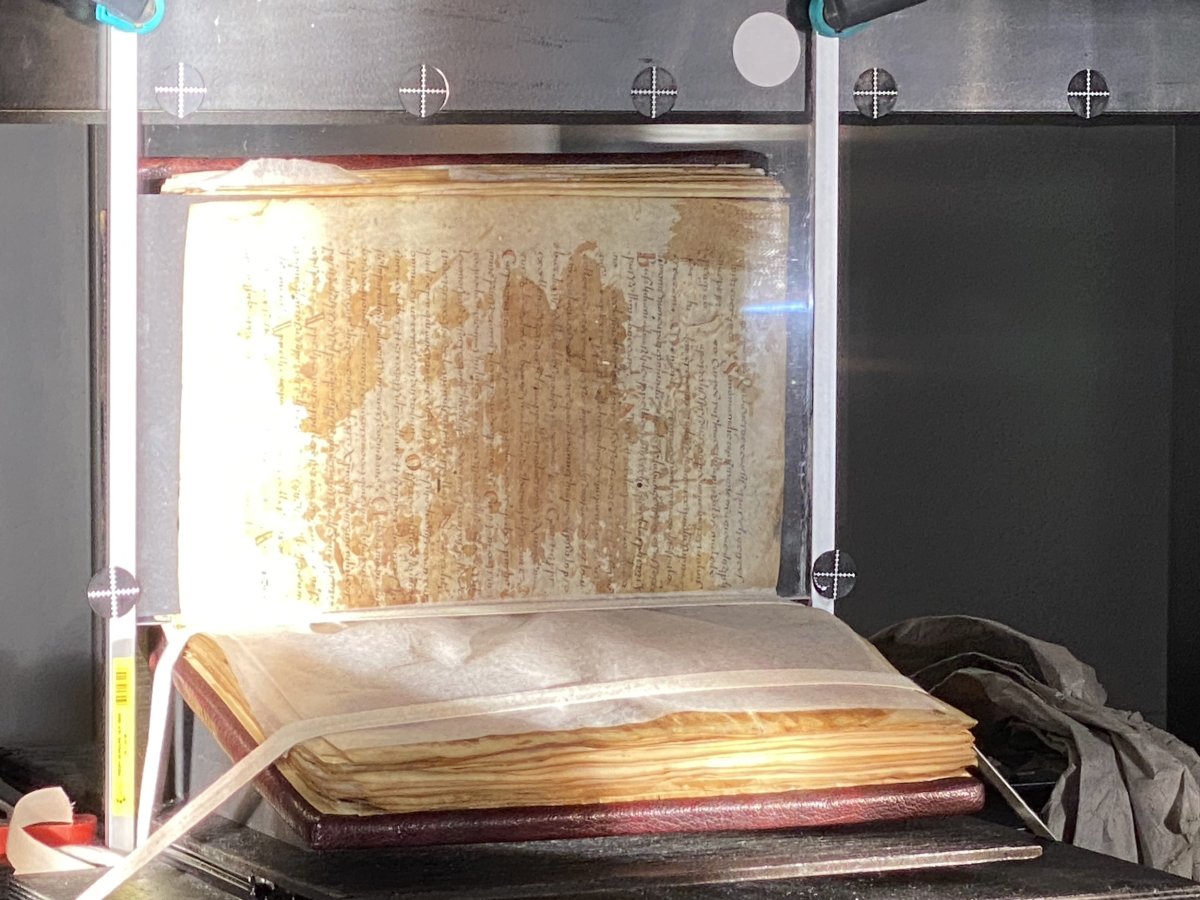Researchers have revealed a hidden manuscript on a recycled piece of parchment, believed to have been written by the Greek mathematician, astronomer and geographer from the ancient Roman Empire: Claudius Ptolemy.
After years of painstaking work, the team, from the Sorbonne and New York Universities, have deciphered the long-lost message detailing the construction and uses of an ancient tool for tracing distances and the stars.
"The pages in the manuscript with the scarcely visible Greek text were discovered back in 1819 by Angelo Mai, but he was unable to read most of the pages," Alexander Jones, one of the lead researchers on the study, told Newsweek. "[He also] made the situation much worse for subsequent scholars by applying a chemical treatment to the pages that was supposed to bring out the writing but in fact just stained them dark brown."

For centuries, the parchment's contents remained a mystery. "Only a few words had previously been read from them, not enough to make it possible to tell more than it was [describing] something astronomical," Jones said.
In January 2020, the team began analyzing the manuscript in detail, using multispectral imaging techniques to reveal the hidden ink.
"By March 2020, under lockdown and collaborating primarily by email, we were succeeding in reading enough to identify the subject as a kind of armillary instrument—a complex assemblage of nested and mobile metal rings that can be used for astronomical observations and/or calculations—and, tentatively at first, to make the specific identification of it as Ptolemy's lost book on the nine-ringed instrument that he named 'Meteoroscope,'" Jones said.
Ptolemy's Meteoroscope was a tool to calculate heights and distances, often in relation to celestial bodies. It is referenced in several ancient texts, including Ptolemy's own book on mapmaking, the Geography. However, details of its structure and operation were lacking, until now.

The hidden manuscript appears to be written in two parts.
"The first part described, in considerable detail, how each component of the instrument should be made and how they were to be put together," Jones said. "The second part consists of a series of short chapters, each describing how to use the instrument for a specific kind of observation or calculation."
Jones said that this form was unique among Ptolemy's surviving works—usually, he describes the instrument's structure and how to use it in very brief terms before focusing on the observations and calculations made with the device.
"Here he is giving enough information so that, with this book, you could have gone to a high-end metalworking shop...and given all the technical specifications needed for them to make the instrument," Jones said.
"You could then use it for numerous applications such as determining your latitude in degrees from the equator, the exact date of a solstice or equinox, or the apparent location of a planet in the zodiac."
Judging by his description, Jones said it would not have been a particularly big instrument, as astronomical tools go. "Probably just about half a meter in diameter," he said.
The parchment on which the manuscript had been written was found in the library of the Bobbio Abbey in Italy and is now stored at the Biblioteca Ambrosiana in Milan. "The monks of the Bobbio Abbey, where our manuscript comes from, were great recyclers of pages from disused books since parchment was always very expensive," Jones said.
These repurposed pages are called palimpsests. On the surface, the Bobbio palimpsest contains a Latin text for Isidore of Seville's Etymologies, which was written out sometime in the 8th century. But Ptolemy's hidden text still lies beneath.

"There's a special pleasure that comes from teasing new knowledge out of fragmentary and difficult-to-read sources and making unexpected connections with the things we already know about ancient science," Jones said.
"Moreover, I have a particular interest in Ptolemy, who was not only the most important and influential writer on astronomy of Roman times but also a remarkably interdisciplinary figure who did significant work on cartography, music theory, visual perception, even astrology."
Jones said that although they had made significant headway, the project was not finished yet.
"Even with the new imaging, some of the pages are really hard to read, partly because the erasure of the Greek writing was sometimes pretty thorough, partly because the second, Latin, text is sometimes right on top of the Greek traces, and partly because of Mai's chemical wash," he said.
"With improved imaging and image-processing, and benefiting from knowing the subject and the author—Ptolemy has a distinctive style and vocabulary that it helps to be familiar with—we are making substantial progress towards as complete and accurate a transcription as is possible, but it will take a while to get there."
A summary of the findings so far was published in the Archive of History of Exact Sciences on March 9, 2023.
Uncommon Knowledge
Newsweek is committed to challenging conventional wisdom and finding connections in the search for common ground.
Newsweek is committed to challenging conventional wisdom and finding connections in the search for common ground.
About the writer
Pandora Dewan is a Senior Science Reporter at Newsweek based in London, UK. Her focus is reporting on science, health ... Read more





